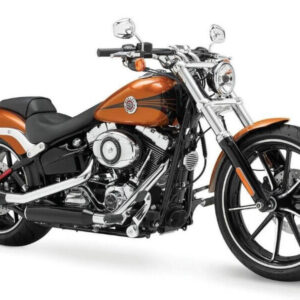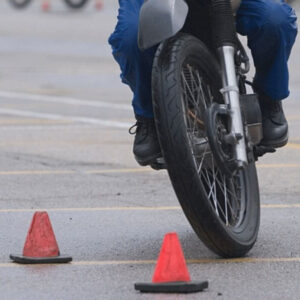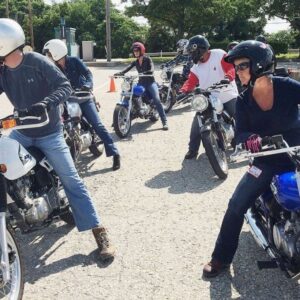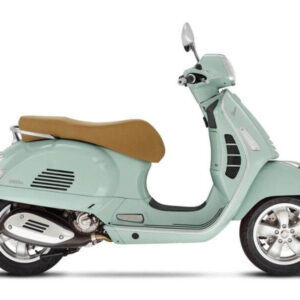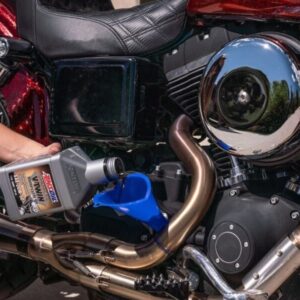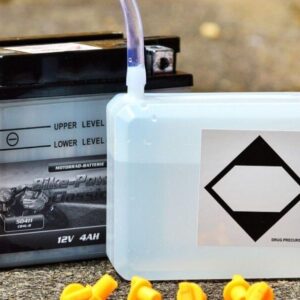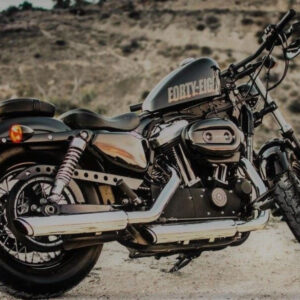How to wash a motorcycle? Whether you ride an electric motorcycle or a gas motorcycle, one thing remains the same: your bike is going to get dirty.
Furthermore, while you’ve likely got an idea of how to wash a motorcycle, we all need a reminder from time to time on how to get your bike gleaming again.
With that in mind, we’ve put together a list of dos and don’ts for cleaning a motorcycle. Follow these and washing your motorcycle will be as enjoyable as riding it – almost.
How to wash a motorcycle?
Knowing how to wash a motorcycle correctly will save you time, money, and more than a little disappointment along the way.
Cleaning a motorcycle not only removes corrosive substances (i.e. road salt and grime) from important parts and finishes, but is also is a great opportunity for you to look over the bike carefully for any structural or connection issues that may not be immediately evident from your daily perch in the saddle.

Get your cleaning supplies together
The best way to wash your motorcycle always starts with ensuring you have what you need to get the job done, and done right. Few things are as frustrating as clearing your schedule, rolling your motorcycle into position, cracking open a beer, and then realizing that you don’t have the right supplies to get started.
There are plenty of motorcycle cleaners to choose from, so you don’t have to make do with something else. All that glitters is not gold, and all that makes suds is not meant to clean motorcycles. From detailing spray to rinseless wash, when selecting products to clean a motorcycle, be sure they are designed for that purpose.
The less you touch your motorcycle while cleaning it, the better (more on this later). However, when you must touch the motorcycle, make sure you have the right materials for the task:
- Sponges: Great for gently removing stuck-on grime without damaging finishes, but be sure they do not pick up pieces of dirt in the process or they can scratch your paint.
- Brushes: Mainly designed for areas like spoked wheels that can handle a bit of elbow grease, but should be used in a very limited capacity, and only when other methods of dirt removal fall short.
- Cloths and flannels: These work great for the initial drying pass post wash.
- Chamios: Ultra-absorbent leather cloth that is safe for all surfaces.
- Microfiber: Best for the finishing touches and final pass with detailing spray. Microfiber does a great job of trapping leftover dust, lint, etc.
Get your work area in order
Once you have everything you need in order to properly clean your motorcycle, you will want to be sure that both your motorcycle and your work area are ready to go. First, before you begin, make sure the motorcycle is cool.
Like a temperamental toddler, your motorcycle needs to be in the right mood for its bath. A hot engine + cold water = thermal shock. When metal gets hot, molecules expand. A quick shot of cold water creates an unceremonious snap back that could cause damage.
You’ll also want to avoid working in direct sunlight, which will make the soap dry faster and thus will make it much more difficult to do a good job cleaning your motorcycle by increasing the probability of streaks and water spots.
Plug exhaust holes
While your motorcycle is generally pretty resilient when it comes to water, it never hurts to plug your exhaust with something like the Bike Master Muffler Rubber Plug. You can also just stuff a rag in the exhaust hole, or simply cover it with a rubber glove in order to keep the water out.
This step is most commonly seen with dirt bike riders, but is something to consider for all motorcycles that feature exhausts that are angled in a way that would allow substantial amounts of water to pool in them during the washing process.
Give the motorcycle a quick spritz
In general terms, the less friction applied while cleaning a motorcycle, the better. The more you rub and scrub, the more likely you are to have your sponge pick up small particles of dirt and then grind them over delicate surfaces.

To lessen the likelihood of this, spray down the entire motorcycle with a combination of motorcycle cleaner and water prior to touching it with anything else. This will help loosen up some of the gunk and wash it away before you finish it off with elbow grease.
Start with a spray cleaner. Motorcycle spray cleaners should be applied to a dry bike before rinsing. They work to take a first pass at loosening up dried muck, bugs, and other unsavory remnants of the road.
Then rinse the motorcycle. After letting the motorcycle spray cleaner do its job (be sure to read the directions on how long to let it sit!), you will want to rinse it away with a standard-pressure hose.
While rockin’ a power washer sounds like an efficient and fun method of doing this, don’t! Unlike the siding on your house, your motorcycle has a multitude of intricate pieces that power washers can damage.
Suds up your motorcycle
After your initial pass with the hose, you can start getting to the meat of the process of cleaning your motorcycle. This is the part everyone thinks of when they think “motorcycle wash.” As always, be very careful with the amount of force you employ.
Here are some other tips to make the job easier:
- Start at the top of your motorcycle and work down.
- Ensure that the solution you are using is right for the surface that you are using it on.
- If your sponge picks up any dirt, grime, grease, etc., be sure to clean it thoroughly or swap it out before continuing. You will also want to change out the wash bucket, as grit and grime have a tendency to pool at the bottom.
- Water and soap will spill on your bike’s chain and brakes of your bike. This is to be expected (more on that later). However, you should not be scrubbing these areas as the coating on each is part of what makes them function correctly.
Rinse your motorcycle
This step should happen relatively quickly after lathering up your ride. You don’t want to let soap dry on your motorcycle as it will cause swirls and streaks that are hard to remove. Don’t be afraid to be thorough here. You really want to splash away any residue, so get at it from all the angles.
Dry the motorcycle
Rather quickly after washing a motorcycle, you should dry it thoroughly. Water left in creases and crevices over time can cause corrosion. One of the best ways to do this is to use an air blower of some type (leaf/snow blower, shop vac on reverse, etc). This allows for a hands-off approach that will reduce swirls and save you some energy.

If you prefer a more tactical approach, you can always use something like the S100 Drying Towel or natural chamois to gently wipe away any excess water droplets.
A lot of people will take their bike out for a ride as a way to finish off the drying process. While this is a much more fun way of getting the job done, it’s important to note that if your bike has fairings, the air may be deflected away from some areas, which will stay wet.
Additionally, you will need to be sure to ride long enough for your engine to get hot enough (for enough time) to really get the excess water to evaporate.
When riding your motorcycle for the first time post-wash, your brakes will most likely perform somewhat differently as they work off any excess water. It is best to ride cautiously and work them out at low speed prior to hitting the streets at full force.
Re-lube the motorcycle chain
In a perfect world, the exact parts of your bike that you wanted to clean would get hit with precisely the right amount of water and cleaning solution. The world, however, is not perfect.
By this point, you will have undoubtedly splashed more than a little bit of cleaning spray or soapy water over lubed up parts of your bike. Most notably, the motorcycle chain. Your best bet is to ensure that you have re-lubed prior to logging any more miles.
For advice on how to complete Step 8, check out Lemmy’s video How to Clean & Lube Your Motorcycle Chain. This is an often overlooked part of the process. While it isn’t technically part of washing a motorcycle, it absolutely needs to be done.
Waxing a motorcycle
By this point, your motorcycle is clean. You have aggressively taken the fight to the opponent and come out victorious. However, diligence is key, and with that comes the need for defense of your masterpiece.
The processes for polishing and waxing a motorcycle are an article unto themselves, and as noted above, we won’t be getting deep into the details here. If you are interested in hearing more on the topic, be sure to leave us a note in the comments and we will get it addressed.
Waxing your motorcycle will make the most of your motorcycle cleaning. A product like S100 Carnauba Paste Wax will seal in the glistening goodness of your paint while simultaneously protecting it from degradation handed down from the elements.
While wax levels out and protects imperfections in surfaces, polishing shaves them down entirely. Honestly, you really shouldn’t be polishing, as it is literally cutting away layers of your clear coat on each pass.
What not to do when washing a motorcycle?

We have covered how you can wash your bike thoroughly and safely, but here are some things you should keep in mind to avoid:
- Again, do not use detergent or soap that you would use on a car. Motorcycle-specific cleaners are the only way to go.
- Don’t wash your bike when it is extremely hot outside, even if it’s not in direct sunlight. For instance, on a hot summer day, the temperature may be high enough that your motorcycle soap dries too quickly, even if you wash your bike in the shade.
- Don’t scrub dirt into your bike’s paint if it won’t come off at first. If there’s a spot that is giving you trouble, let your motorcycle cleaner soak into the dirt for five minutes or so and try again.
FAQs
What is the proper way to wash a motorcycle?
Use two different buckets when cleaning your motorcycle: one bucket filled with water and motorcycle shampoo and another bucket filled with clean water. Make sure you rinse your cloth in the bucket with pure water before dipping back into the one with your cleaning mixture.
Is it OK to wash your motorcycle?
If you choose not to give your motorcycle a quick spot-clean after each ride, it will need a thorough going-over every two weeks or every 5-6 rides to remove any dirt build-up. This includes using hot, soapy water to wash down the body of the bike, wheels and windshield.
Should I dry my motorcycle after washing?
After you’ve washed your bike, rinse it with plenty of water and dry it with a clean cloth. Apply touch-up paint to the wheels if you spot any damaged areas.
Above is information about How to wash a motorcycle? that we have compiled. Hopefully, through the above content, you have a more detailed understanding of What not to do when washing a motorcycle? Thank you for reading our post.

